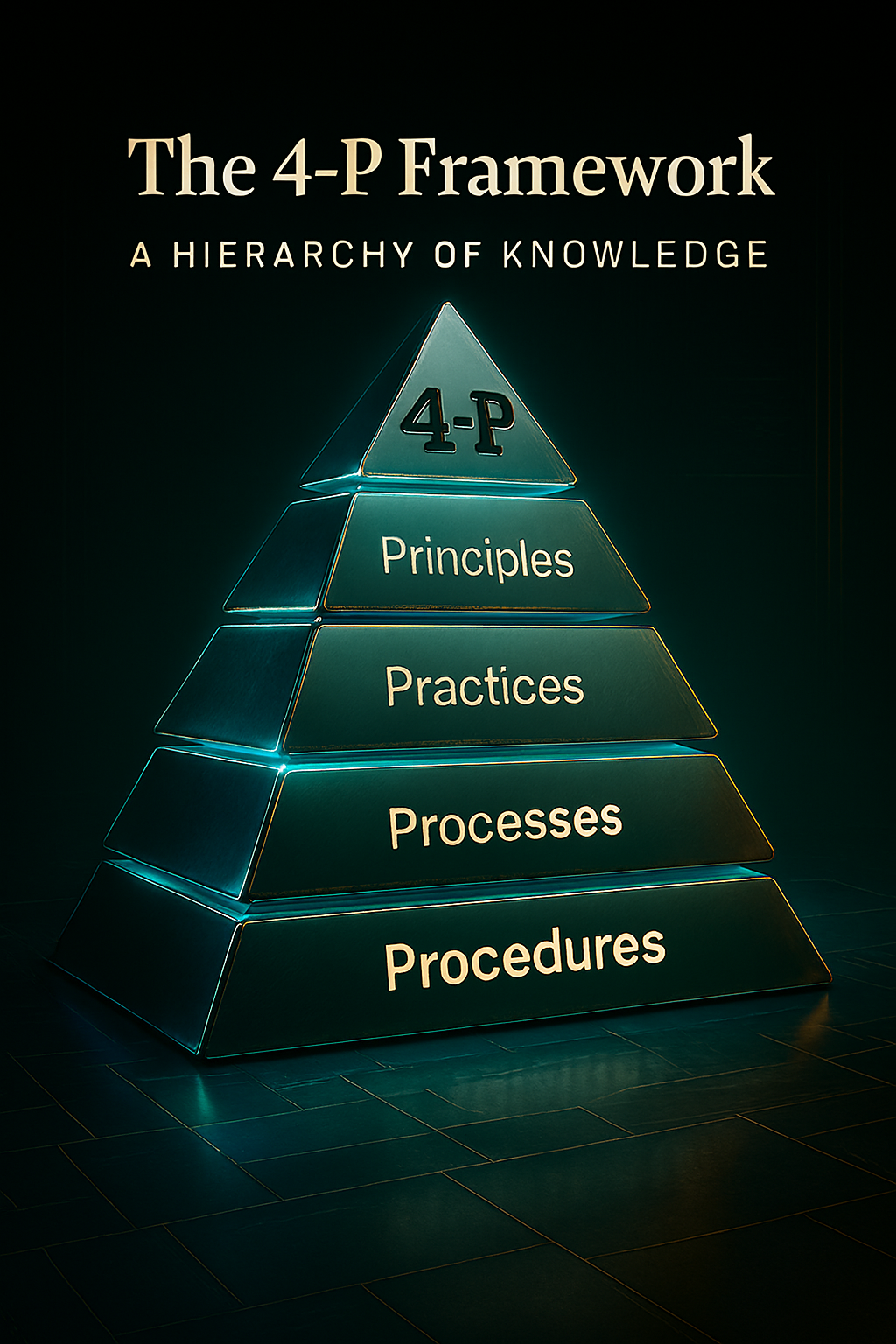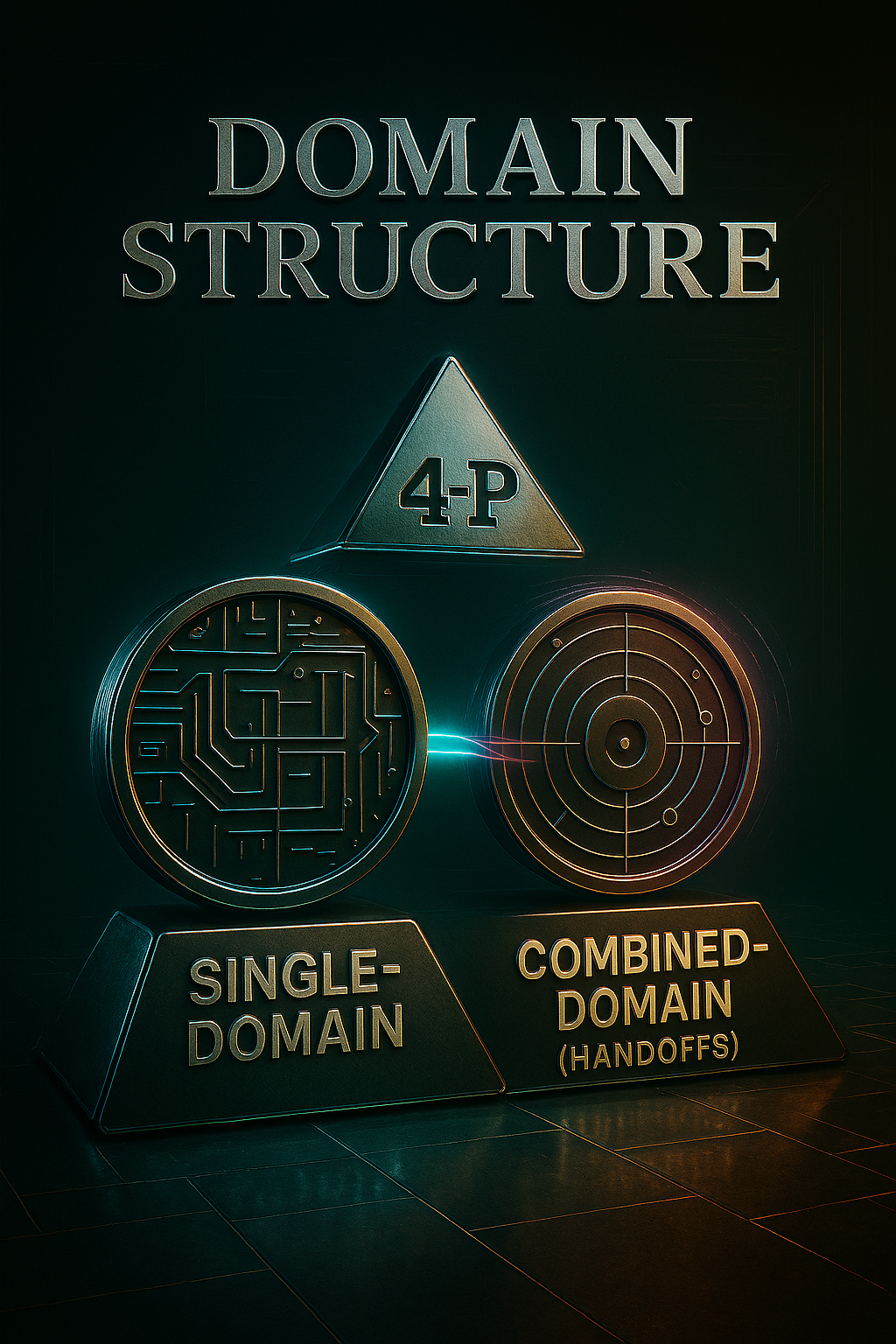Executive Summary
This document presents The “Zaphyr Operational Framework (ZOF)”, a comprehensive and universally applicable system for architecting scalable, compliant, and highly efficient business operations. The primary objective is to transform an organization's operational knowledge from a collection of disparate, informal practices into a unified, forensically sound, and strategically aligned ecosystem. This framework is meticulously designed to address the critical challenges of the modern business landscape, particularly the management of distributed or remote teams, adherence to complex regulatory environments, and the need for clear, auditable workflows.
The core of this framework is a tripartite structure: The 4-P Knowledge Hierarchy (Policy, Process, Procedure, Plan/Guide), The Domain Categorization Model, and The Bifurcated Documentation Strategy. Successful implementation will substantially minimize legal liability, empower teams by increasing efficiency, and establish a resilient, scalable foundation that will support long-term growth.
Part I: Foundational Philosophy & Core Principles
The modern business environment is defined by complexity. This framework provides the architecture to render that complexity obsolete, transforming it into a source of competitive advantage.
1.1 The 4-P Framework: A Hierarchy of Knowledge
To eliminate ambiguity and create a coherent, scalable knowledge base, all documentation must adhere to the 4-P Framework. This assigns a clear purpose to each document type.
- Policy (The "Why"): The highest-level governing documents. They articulate the fundamental rules, principles, and legal or ethical commitments of the organization.
- Process (The "What"): A high-level, end-to-end overview of the major stages required to achieve a significant business objective.
- Procedure (The "How"): The core Standard Operating Procedures (SOPs). They are detailed, step-by-step instruction manuals for completing a specific task.
- Plan / Guide / Article (The "Reference"): All supporting documentation, such as checklists, templates, and user manuals.

The 4-P Structure
The 4-P structure — Purpose, Process, People, and Performance — forms the strategic backbone of ZOF. This layered approach ensures that every operational decision aligns with overarching goals, is executed efficiently, engages the right talent, and delivers measurable results.
1.2 The Domain Structure: Single-Domain vs. Combined-Domain (Handoffs)
All corporate activities can be structured into two primary types: Single-Domain Categories (core, vertically-integrated functions) and Combined-Domain (Handoff) Categories (critical intersections where a process transitions from one domain to another).

Domains & Handoffs
ZOF’s domain architecture ensures seamless handoffs between specialized operational zones. Each domain is a self-contained environment, yet fully integrated into the larger system, allowing for rapid adaptation and cross-domain synergy without loss of fidelity.
1.3 The Bifurcated Documentation Strategy: A Dual-Audience Imperative
A central strategic requirement is the clear separation of internal operational documentation (The Operational Blueprint) from external brand communications (The Brand Voice). This allows the internal team to operate with technical precision while ensuring the external brand perception remains strong and consistent.

Bifurcated Core
The bifurcated core represents the dual nature of ZOF’s operational intelligence — two distinct yet interdependent hemispheres, each optimized for precision and adaptability. This split design channels energy and data through a central plasma seam, creating a living feedback loop between structure and function.
Part II: The Architectural Blueprint - Core Domains
This section provides a generalized blueprint of the essential policies, processes, and procedures that should exist within each Single-Domain category, such as Business Development, Client Lifecycle Management, Risk & Compliance, Finance, and Administration.
Part III: The Connective Tissue - Cross-Functional Handoffs
The greatest potential for operational failure exists at the handoff points between domains. These procedures are the operational glue that binds the organization into a cohesive service delivery ecosystem. Each handoff procedure must be meticulously detailed, outlining triggers, input requirements, workflows, accountability, and service level agreements (SLAs).
Part IV: Implementation Roadmap
A phased rollout is recommended to manage the scope and focus resources on the most critical areas first. A typical roadmap involves three phases: Phase 1 (Compliance Shield), Phase 2 (Revenue Engine), and Phase 3 (Support Structure).
Part V: Governance and Continuous Improvement
An operational framework must be a living system. A continuous improvement cycle is necessary, including designated ownership, annual regulatory reviews, quarterly process reviews, and an open feedback mechanism for all team members.
Conclusion
By implementing this strategic framework, an organization will not only organize its current knowledge but also build a scalable and resilient operational foundation. This Unified Operational Framework serves as the central nervous system for the company, enabling teams to execute with precision, mitigating risks, and ensuring a consistent, professional service delivery that supports enduring growth and market leadership.
 ← Back to Digital Originals
← Back to Digital Originals
